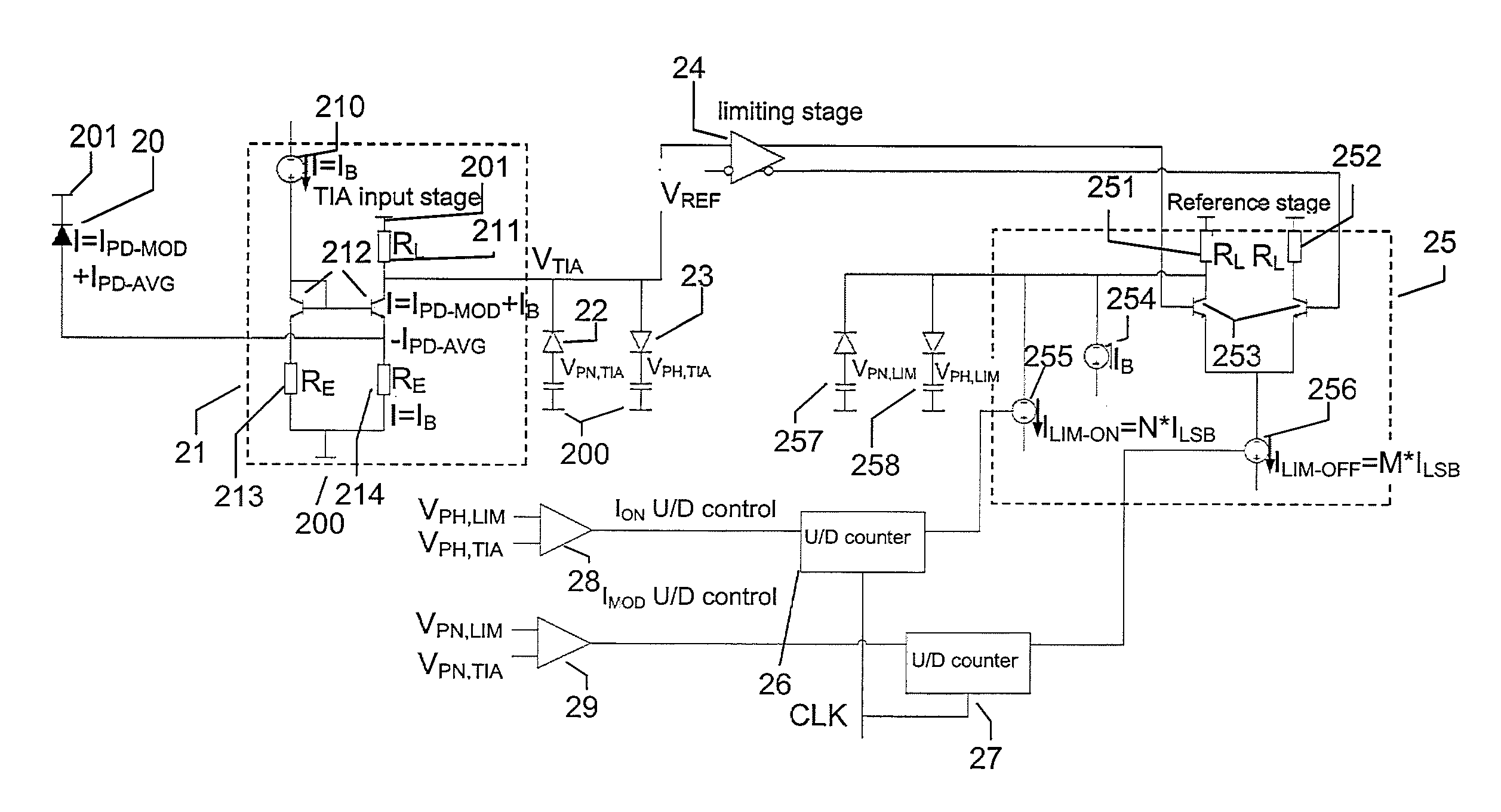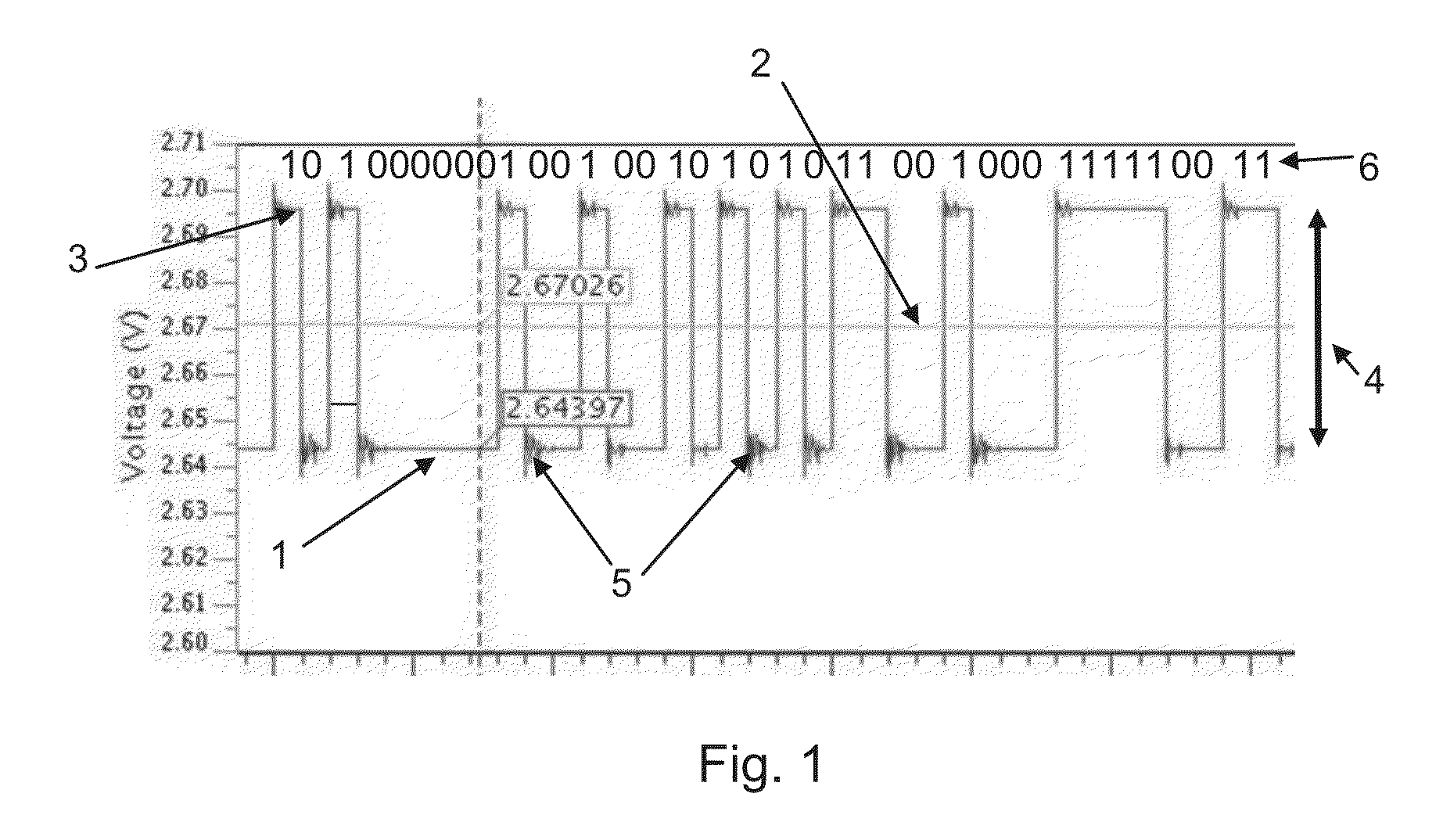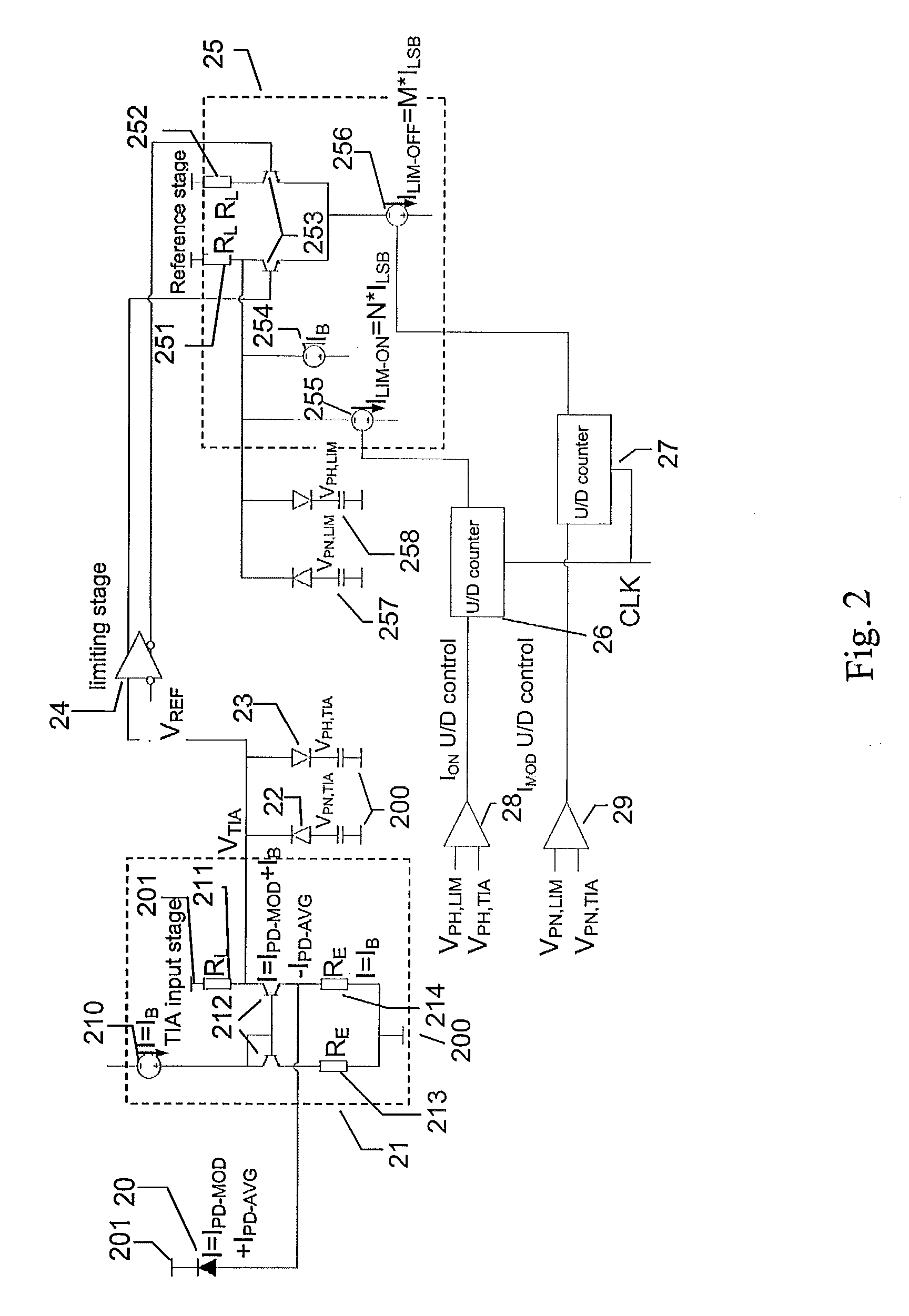Optical receiver/transmitter with circuit for determining modulation amplitude
a technology of optical receiver and modulation amplitude, applied in the direction of electrical equipment, transmission monitoring, electromagnetic transmission, etc., can solve the problems of corresponding relative deviation, too slow peak detector to provide accurate measurement of amplitude independent of signal content, etc., to reduce the peak detector bandwidth, increase the uncertainty of the magnitude of the received signal, and improve data transmission efficiency
- Summary
- Abstract
- Description
- Claims
- Application Information
AI Technical Summary
Benefits of technology
Problems solved by technology
Method used
Image
Examples
Embodiment Construction
[0024]In one embodiment of the method of the invention the method comprises modulating said reference stage with said first binary signal or substantially a copy thereof. In this way the reference stage is modulated by the same signal content as the first binary signal. In most embodiments a delay between two copies of a signal can be tolerated without substantially affecting the accuracy of the determination of signal property because averaging is involved in providing the peak measures.
[0025]As mentioned above, one or more peak measures are obtained from the first-binary signal and the reference-binary-signal indicating that these values are measurements obtained via peak detection. However, in some embodiments it may be possible to apply other types of circuits suitable for detecting the amplitude of the signal. The peak detector may be arranged to detect the extreme of the signal waveform which would allow the detectors to e.g. detect peaks caused by transients in the signal. Ho...
PUM
 Login to View More
Login to View More Abstract
Description
Claims
Application Information
 Login to View More
Login to View More - R&D
- Intellectual Property
- Life Sciences
- Materials
- Tech Scout
- Unparalleled Data Quality
- Higher Quality Content
- 60% Fewer Hallucinations
Browse by: Latest US Patents, China's latest patents, Technical Efficacy Thesaurus, Application Domain, Technology Topic, Popular Technical Reports.
© 2025 PatSnap. All rights reserved.Legal|Privacy policy|Modern Slavery Act Transparency Statement|Sitemap|About US| Contact US: help@patsnap.com



